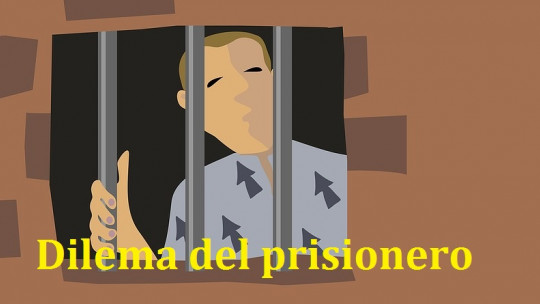
Human beings find themselves faced with various situations in which we must choose an option among all those available to us, trying to anticipate future consequences and foreseeing which option could be the most advantageous. To do this, we have a brain that is a powerful tool capable of making decisions continuously; However, it is not always right to choose the best option, since a series of cognitive biases can intervene.
Hyperbolic discounting, in the field of economics, refers to that propensity to choose the immediate reward, even if it is smaller, instead of waiting longer to achieve greater rewards. This is because the fact of being able to achieve a reward immediately has a great power of attraction.
In this article we will see what exactly hyperbolic discounting consists of and what its relationship is with economics and decision making.
What is hyperbolic discounting?
In recent years, a concept that is mainly used in the field of economics and whose name is “hyperbolic discounting” has aroused quite a bit of curiosity. This concept is also being actively studied by researchers in neuroeconomics, a branch that attempts to explain how human decision-making develops based on various variables, the ability of the human being to process various alternatives and follow a direction on which to act.
When we talk about hyperbolic discounting, we refer to that propensity of some people to opt for receiving an immediate reward, even if it is smaller, instead of waiting longer to achieve a greater reward. This is because the fact of being able to achieve a reward immediately can be very attractive. On the other hand, as the time delay to obtain a reward increases, our perception of its value will decrease, meaning that the subjective value of rewards has a tendency to decrease over time.
Furthermore, hyperbolic discounting, in the field of economics, is a delay discounting model that is inconsistent over time, being one of the fundamental bases in the study of behavioral economics
On the other hand, it is considered a cognitive bias that encourages people towards impulsivity and, therefore, immediate gratification, so that could cause us to be conditioned to make the wrong decision And it may happen that when we want to rectify it, it is already too late.
The preference for obtaining more immediate benefits over time, as occurs with hyperbolic discounting, can deprive us of achieving greater rewards in the long term, and when it comes to making decisions, people have a tendency to normally opt for the most favorable options. safe; hence, the preference for short-term rewards. Therefore, it is quite common that we are more willing to accept a small but sure reward, rather than wait to obtain greater benefits because they are less certain because we might not get them.

As previously stated, hyperbolic discounting is a cognitive bias that can cloud our thinking and make us lose our reasoning, leading us to opt for an immediate but smaller reward instead of waiting to achieve a larger reward. because future rewards have less value to our brain than those that can be used in the present moment
Examples of hyperbolic discounting
Next, we will see some examples that will help us better understand what the cognitive bias of hyperbolic discounting consists of on a daily basis.
Hyperbolic discounting can become deeply rooted in our daily habits, affecting various areas of our lives. First of all, we can find How does this bias affect eating? And a person who is hungry is more likely to choose a more appetizing food, such as a cake, instead of a piece of fruit, because at that moment it is quite unusual for them to think about the benefit that a meal will have. piece of fruit for your health in the medium and long term.
It should be noted that the hyperbolic discounting bias could be observed in the famous experiment by Stanford University researchers Walter Mischel and Ebbe B. Ebbesen in 1979 known as “Marshmallow.” In this experiment, the researchers sought to analyze children’s ability to delay obtaining a reward which is also known as “delay of gratification” or “deferred gratification.”
To analyze the delay of gratification of these children, the researchers offered them an immediate reward, leaving a candy on the table in front of them and told them that if they were able to last 15 minutes without eating the candy in front of them, they would get another treat.
The results showed that There was a positive correlation between being older and having a greater ability to delay gratification, as well as it was also observed that children who waited to get the second candy tended to be the ones who had greater success in studies; Therefore, a greater number of cases of hyperbolic discounting were found in younger children and those who had lower academic performance.
How is the cognitive bias of hyperbolic discounting used in companies?
The advertising and marketing departments of large companies have closely analyzed and studied people’s ways of behaving and their way of making decisions when making purchases. In addition, these departments have extensive knowledge about cognitive biases. Therefore, it is worth keeping in mind How large companies can take advantage of the cognitive bias of hyperbolic discounting to make people fall into their “traps” and thereby increase your sales.
Company marketing takes advantage of the hyperbolic discount bias in the sense that members of this department are aware that instant rewards will be well received by a high percentage of consumers, even though they should analyze all of them. the options to obtain a greater benefit. However, the more time passes, the less attractive and less valuable a reward is, being a favorable aspect for companies that want to sell, adding to this the stress that increases impulsivity.
Let’s see below some examples in which the marketing and advertising departments of companies take advantage of hyperbolic discounting to successfully lose their products.
1. Increase the price of the product if the customer is late in payment
The phrase “buy now and pay later” is very common In this sense, the hyperbolic discount bias influences the decision of many customers when purchasing a product when they prefer to pay a greater amount of money for a product as long as they can start paying in a few months, instead of paying a smaller amount of money if in this case it has to be at the time of purchasing the product, since the future is seen as something distant.
In this way, the company manages to divert attention from the price because the customer focuses on the moment they have to pay and sees the option of not having to pay when purchasing the product as more attractive.
2. Give a gift at the beginning of a purchase
A common practice used by companies It consists of giving something to a customer when they have just purchased a product whose cost is much higher because in this way it manages to alter their assessment of the benefits of acquiring the product with respect to its price.
In this way, many companies give something away instantly when a product or subscription is purchased to influence the customer’s decision and encourage them to think that they will pay less.
3. High prices in the short term
Another of the most common practices of companies that are based on the theory of hyperbolic discounting is one in which In the short term, a lower cost is offered if a monthly payment is paid immediately than if an annual fee were paid all at once. Let’s see it better with an example.
Many streaming platforms for watching series and movies offer two options to pay for the subscription. The first, paying monthly, can be more tempting because it is much lower (e.g., €7.99/month); while the second, paying annually (e.g. €79.99) may seem too much to pay upfront. For this reason, it is quite common for the first option to be chosen even though after the subscription year we will have paid more money for the subscription (€95.58; which is €15.89 more).
As we can see, the cognitive bias of hyperbolic discounting can become very decisive in our purchases if we do not reflect carefully enough before making each of our purchases. Although it is true that many people have difficulty making certain purchases at once and have no other option than to buy in installments, even if in the long run they end up paying more money. However, there are many times that the hyperbolic discount bias works in favor of companies due to buyers’ lack of reflection and their impulsiveness.








